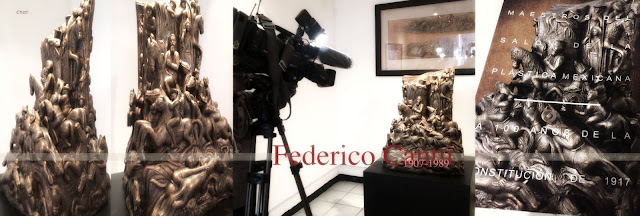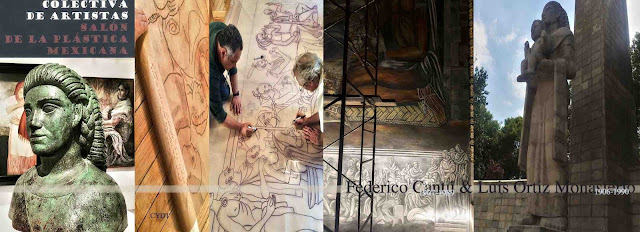The Mexican Revolution (Spanish: Revolución mexicana), also known as the Mexican Civil War (Spanish: guerra civil mexicana), was a major armed struggle, lasting roughly from 1910 to 1920, that radically transformed Mexican culture and government. Although recent research has focused on local and regional aspects of the Revolution, it was a genuinely national revolution. Its outbreak in 1910 resulted from the failure of the 35-year-long regime of Porfirio Díaz to find a managed solution to the presidential succession. This meant there was a political crisis among competing elites and the opportunity for agrarian insurrection. Wealthy landowner Francisco I. Madero challenged Díaz in the 1910 presidential election, and following the rigged results, revolted under the Plan of San Luis Potosí.[6] Armed conflict ousted Díaz from power; a new election was held in 1911, bringing Madero to the presidency.
The origins of the conflict were broadly based in opposition to the Díaz regime, with the 1910 election becoming the catalyst for the outbreak of political rebellion. The revolution was begun by elements of the Mexican elite hostile to Díaz, led by Madero and Pancho Villa; it expanded to the middle class, the peasantry in some regions, and organized labor. In October 1911, Madero was overwhelmingly elected in a free and fair election. Opposition to his regime then grew from both the conservatives, who saw him as too weak and too liberal, and from former revolutionary fighters and the dispossessed, who saw him as too conservative.
Madero and his vice president Pino Suárez were forced to resign in February 1913, and were assassinated. The counter-revolutionary regime of General Victoriano Huerta came to power, backed by business interests and other supporters of the old order. Huerta remained in power from February 1913 until July 1914, when he was forced out by a coalition of different regional revolutionary forces. When the revolutionaries' attempt to reach political agreement failed, Mexico plunged into a civil war (1914–1915). The Constitutionalist faction under wealthy landowner Venustiano Carranza emerged as the victor in 1915, defeating the revolutionary forces of former Constitutionalist Pancho Villa and forcing revolutionary leader Emiliano Zapata back to guerrilla warfare. Zapata was assassinated in 1919 by agents of President Carranza.


